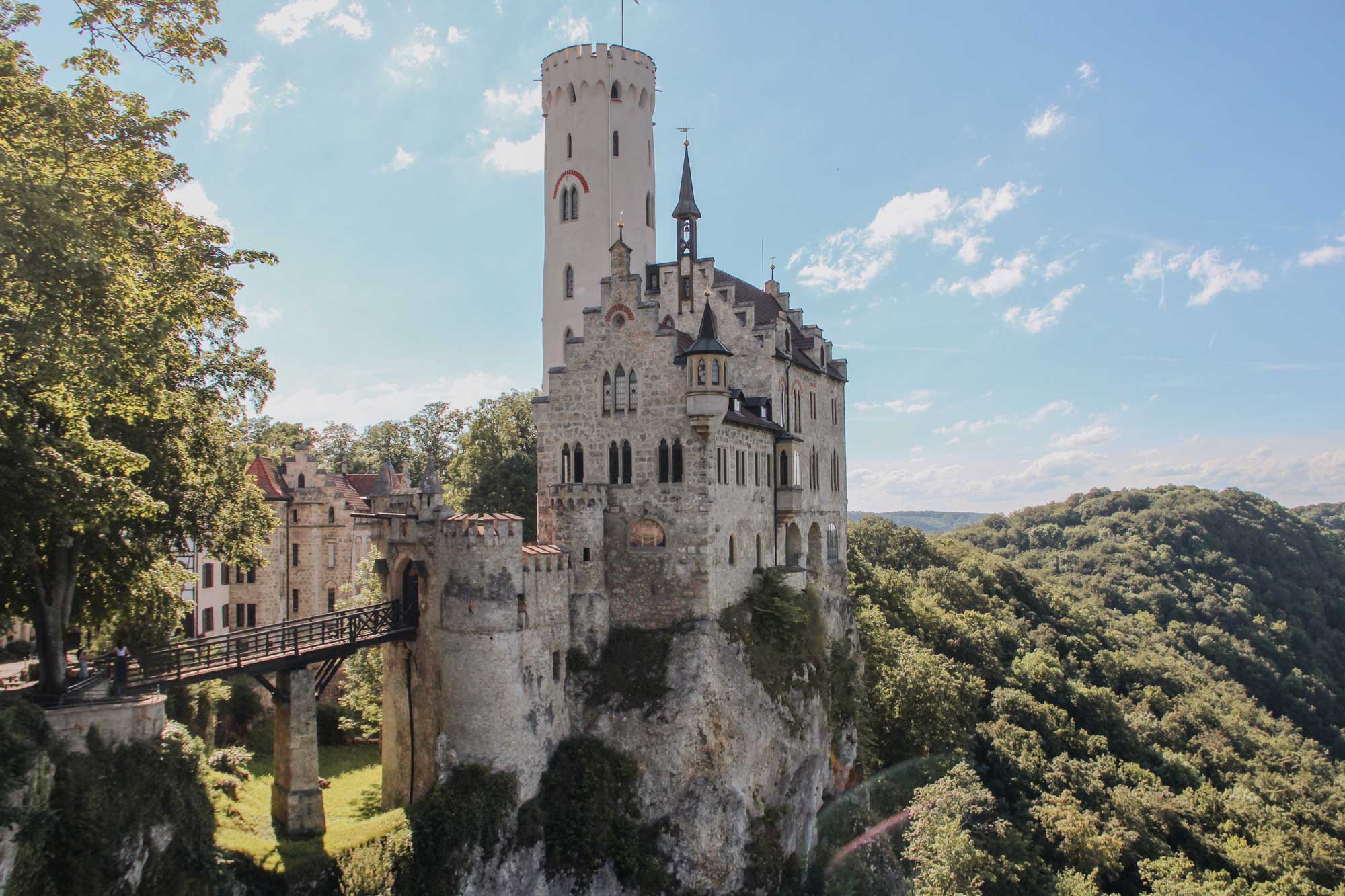Where fairy tales come alive: SouthWest Germany’s romantic castles and gardens
Nothing demonstrates SouthWest Germany’s long, rich and turbulent history more vividly than its array of castles, palaces and stately gardens. There are hundreds to enjoy; here are some highlights

Renaissance luxury
Schloss Langenburg – home to the Hohenlohes
Near Schwäbisch Hall, high above the Jagst River, this 400-year-old royal residence is still home to the Hohenlohe-Langenburg family.
See: Historic objects, such as furniture, tapestries, paintings, and porcelain, as well as a fine collection of weapons and armor. In summer, enjoy outdoor concerts.
Star visitors: Prince Philipp and Princess Saskia of Hohenlohe-Langenburg’s royal relatives from around Europe, such as Queen Elizabeth II, Prince Charles (in 2013).
Unique: With 35 classic cars, the Automobile Museum traces the development of the car over the decades.
www.schloss-langenburg.de/ENGLISH?id=206
Heidelberg Castle – Germany’s most romantic castle
The castle that overlooks Heidelberg was destroyed by the French at the end of the 17th century – an event still commemorated with the spectacular annual summer fireworks displays. During Germany’s Romantic revival, the ruin inspired painters and poets from all over Europe.
See: The views over the old city, bridge and river; the permanent exhibitions devoted to the Middle Ages and Romanticism; the famous garden, the Hortus Palatinus.
Star resident: British Princess Elizabeth Stuart (1596 –1662), known as The Winter Queen and the wife of Frederick V.
Unique: The German Apothecary Museum, with its rare pharmaceutical vessels, mortars, scales, and weights – even medieval travelers’ first aid kits.
Baroque magnificence
Ludwigsburg Palace – one of Europe’s largest Baroque buildings
Just outside Stuttgart, with 18 buildings and 452 rooms, this grand palace is modelled on Versailles and surrounded by equally impressive gardens.
See: Room after grandiose room, from Baroque and Rococo to Neoclassical.
Famous visitors: Wolfgang Amadeus Mozart in 1763. For 80 years, the annual Ludwigsburg Music Festival has featured Mozart’s works (May 15 – July 30, 2014).
Special: The Ceramics Museum, the Fashion Museum and Europe’s oldest palace theatre, with its original scene-shifting machinery.
Schwetzingen Palace – glorious English and French gardens
The 18th-century gardens are Europe’s only original Baroque-style grounds.
See: Throughout this wonderful landscaping are more than 100 sculptures, as well as fountains and bridges. Small buildings include the Temple of Apollo, The Bath House (like an Italian villa) and The Turkish Gardens, with their mosque.
Famous visitors: Voltaire wrote Candide during a stay at Schwetzingen in 1758.
Special: The gardens boast the most sakura (cherry blossom) trees outside Japan.
www.schloss-schwetzingen.de/en/
Romantic revival
Hohenzollern Castle – Neo-gothic romance
Hohenzollern was once home to the German royal family. The earliest fortress stood on this crag some 600 years ago; this castle dates from the 1850s.
See: The grand rooms inside, as well as the panoramic vista from the walls.
The current owners: Georg Friedrich, Prince of Prussia, and Karl Friedrich, Prince of Hohenzollern, are direct descendants of Wilhelm II, the last German Emperor.
Special: The Treasury, with the Prussian Royal crown.
www.burg-hohenzollern.com/startpage.html
Schloss Lichtenstein – Württemberg’s fairy tale castle
Visible from afar, the fortifications look like an extension of a rocky cliff top.
See: The armory, chapel with 15th/16th-century glass paintings, and cozy tap room/bar.
Important residents: The castle is still owned by the Dukes of Urach.
Special: The knight’s hall, with its painted ceiling; the count’s magnificent bedchamber.
Downloads
- Press Release_SouthWest Germany_Castles and Gardens.doc (doc - 711 KB)
